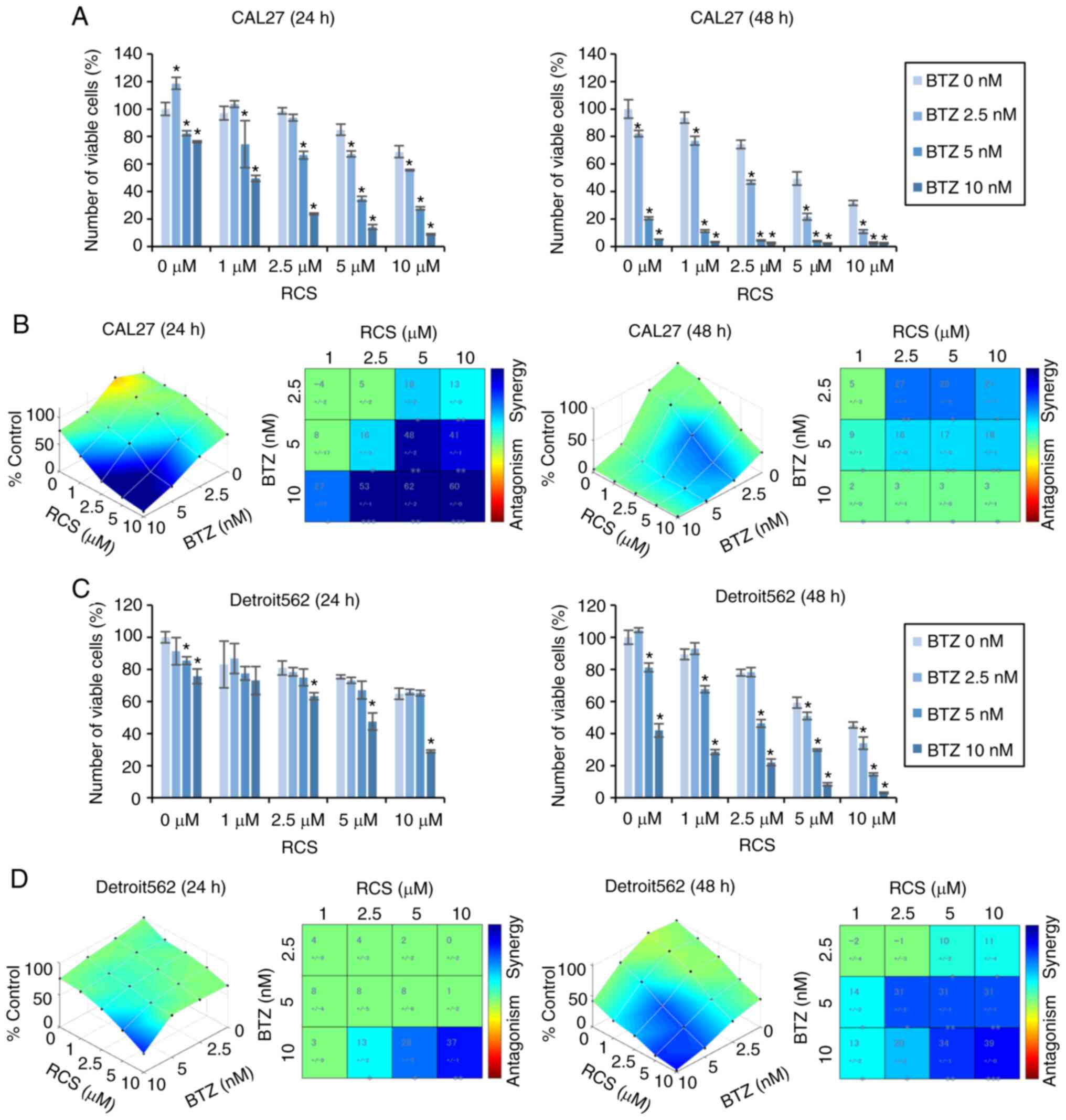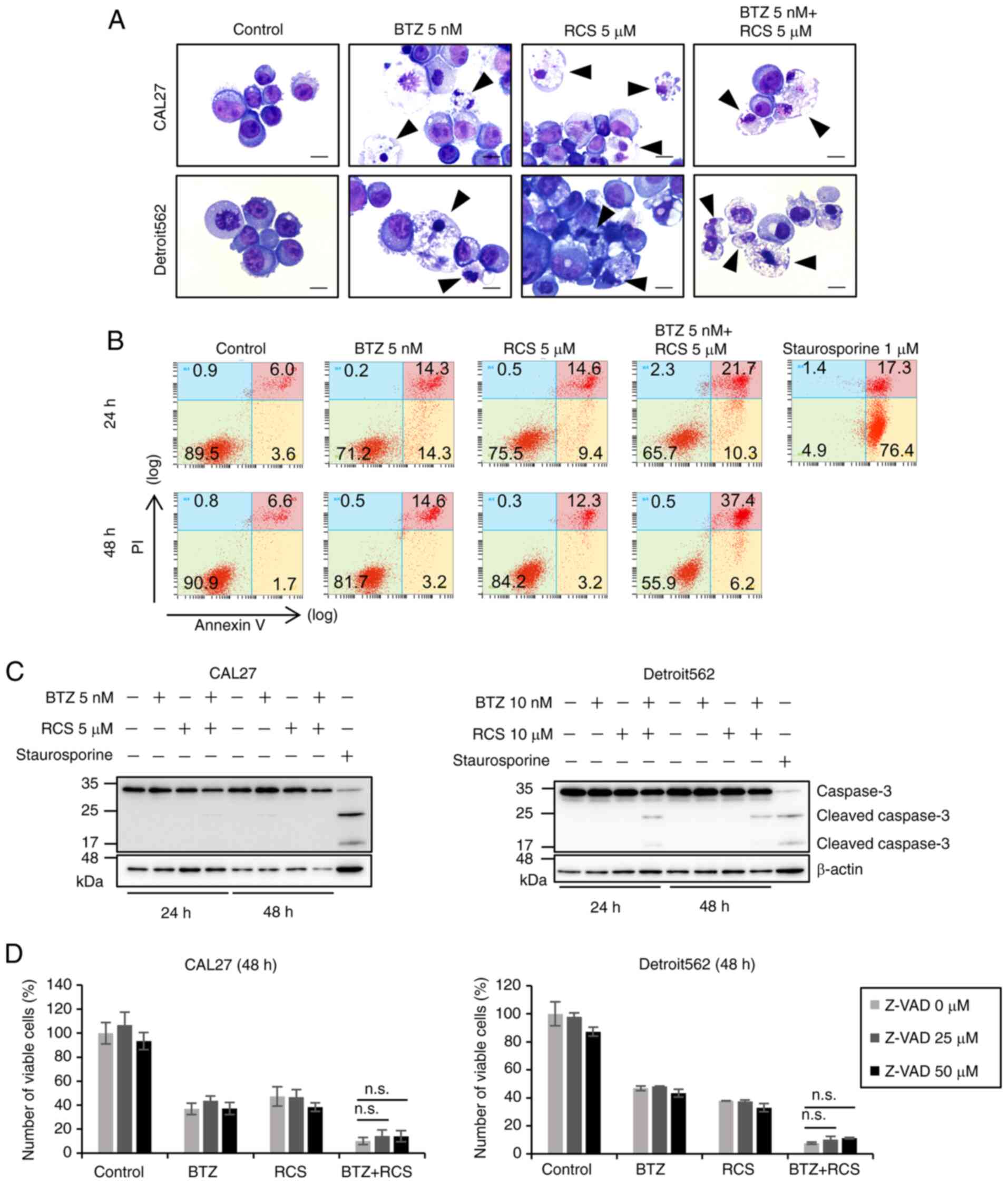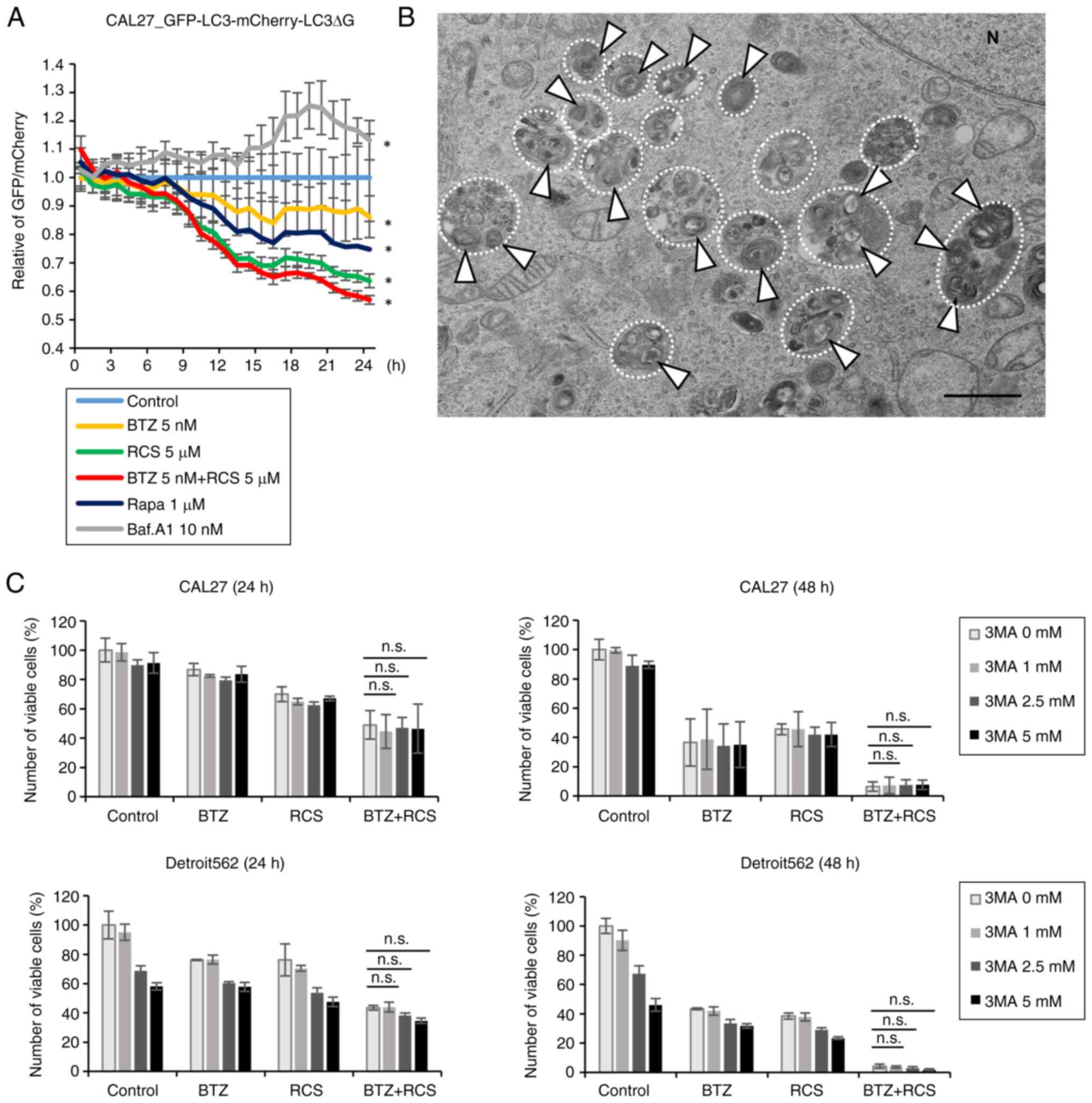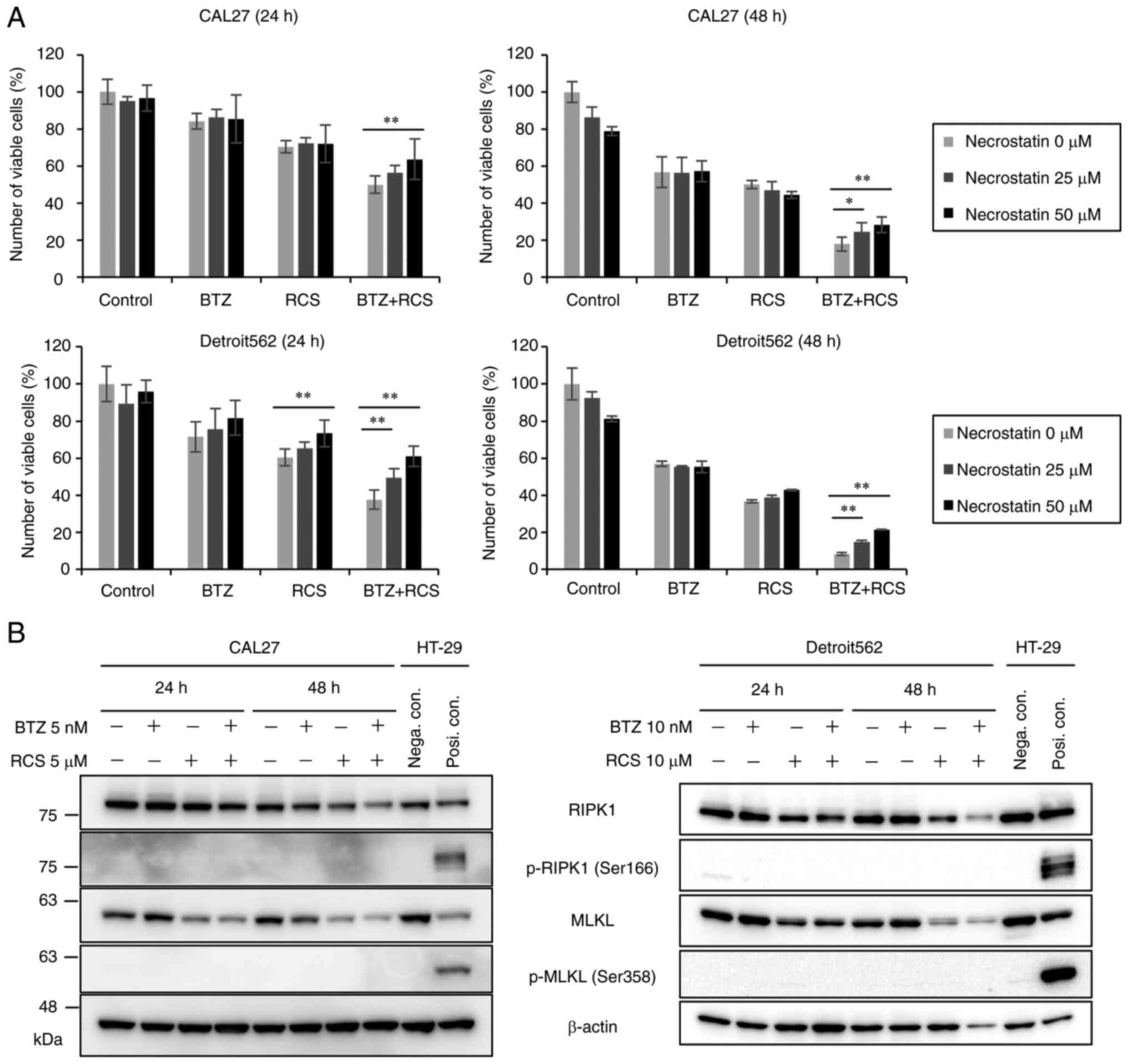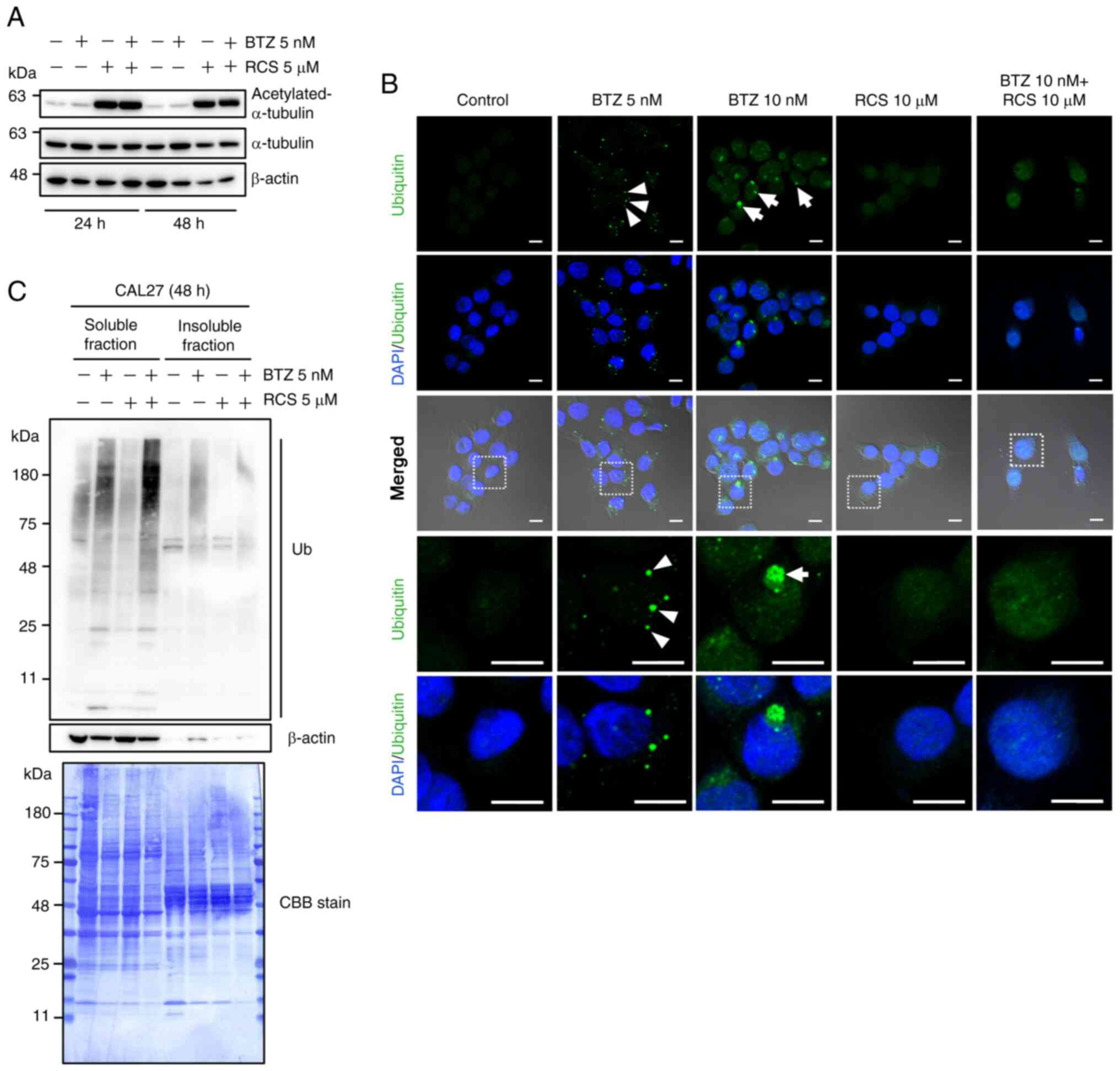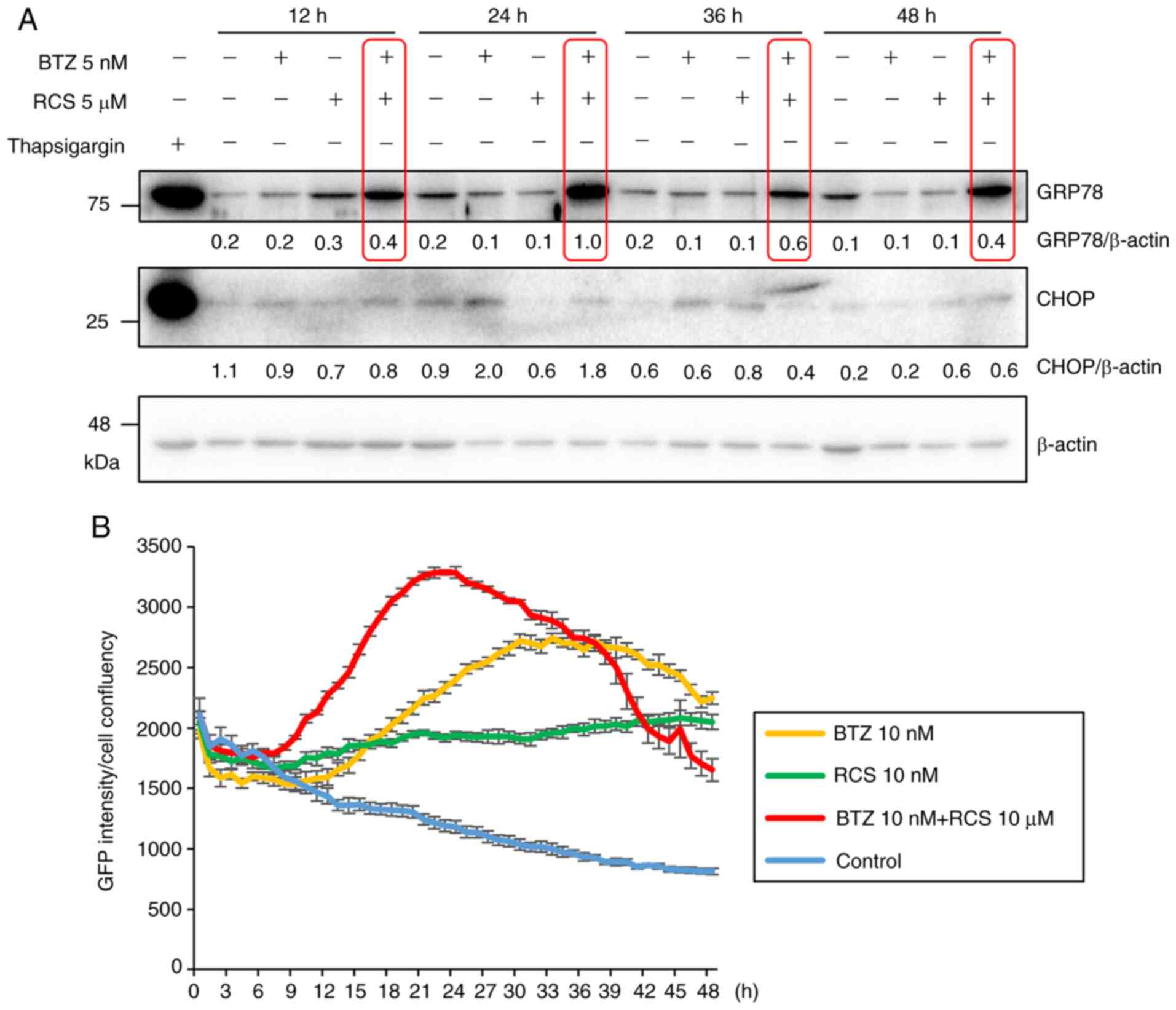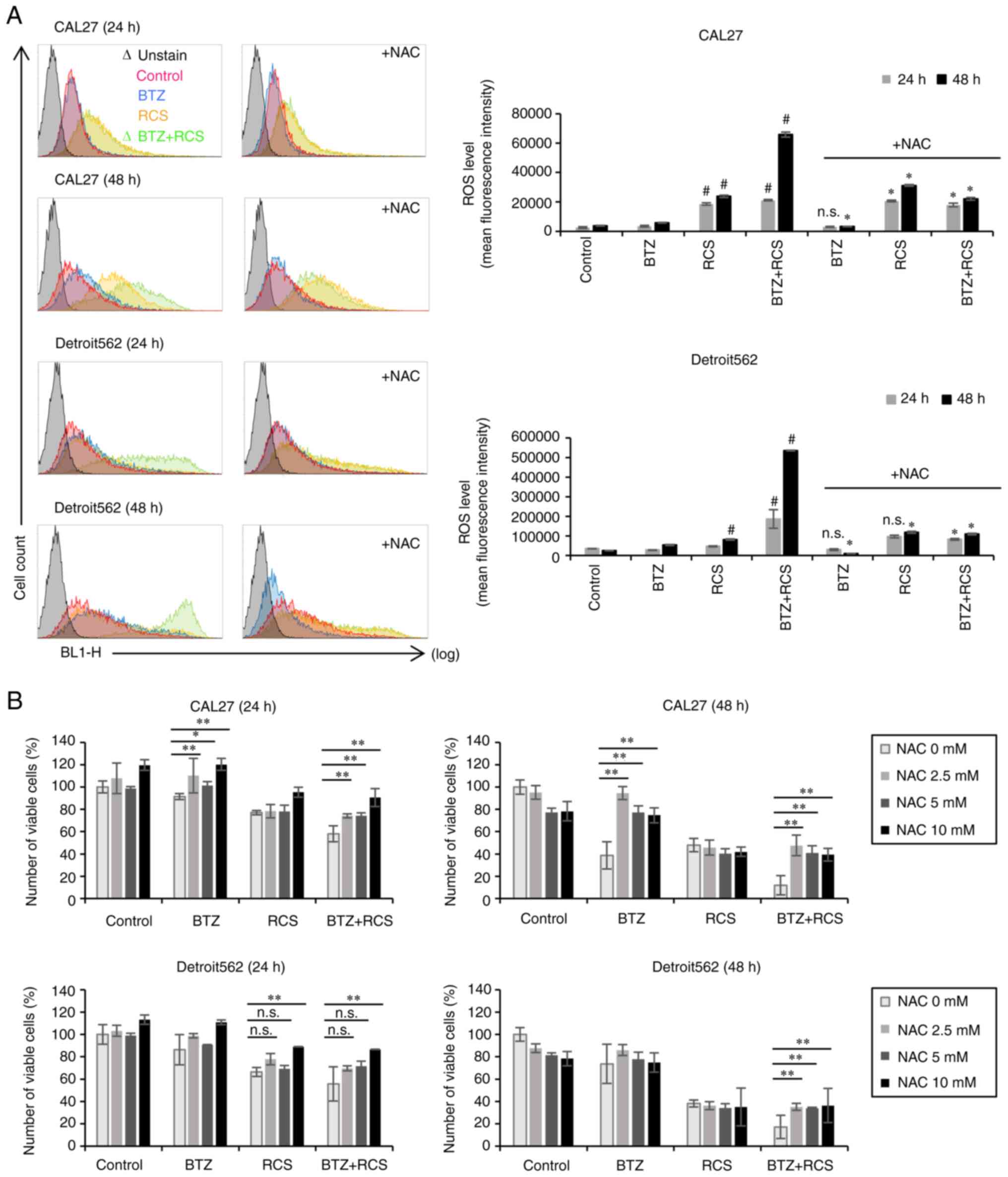|
1
|
Bray F, Ferlay J, Soerjomataram I, Siegel
RL, Torre LA and Jemal A: Global cancer statistics 2018: GLOBOCAN
estimates of incidence and mortality worldwide for 36 cancers in
185 countries. CA Cancer J Clin. 68:394–424. 2018. View Article : Google Scholar : PubMed/NCBI
|
|
2
|
Brockstein BE: Management of recurrent
head and neck cancer: Recent progress and future directions. Drugs.
71:1551–1559. 2011. View Article : Google Scholar : PubMed/NCBI
|
|
3
|
de Ruijter AJM, van Gennip AH, Caron HN,
Kemp S and van Kuilenburg ABP: Histone deacetylases (HDACs):
Characterization of the classical HDAC family. Biochem J.
370:737–749. 2003. View Article : Google Scholar : PubMed/NCBI
|
|
4
|
Boyault C, Sadoul K, Pabion M and Khochbin
S: HDAC6, at the crossroads between cytoskeleton and cell signaling
by acetylation and ubiquitination. Oncogene. 26:5468–5476. 2007.
View Article : Google Scholar : PubMed/NCBI
|
|
5
|
Gao YS, Hubbert CC, Lu J, Lee YS, Lee JY
and Yao TP: Histone deacetylase 6 regulates growth factor-induced
actin remodeling and endocytosis. Mol Cell Biol. 27:8637–8647.
2007. View Article : Google Scholar : PubMed/NCBI
|
|
6
|
Kawaguchi Y, Kovacs JJ, McLaurin A, Vance
JM, Ito A and Yao TP: The deacetylase HDAC6 regulates aggresome
formation and cell viability in response to misfolded protein
stress. Cell. 115:727–738. 2003. View Article : Google Scholar : PubMed/NCBI
|
|
7
|
Scroggins BT, Robzyk K, Wang D, Marcu MG,
Tsutsumi S, Beebe K, Cotter RJ, Felts S, Toft D, Karnitz L, et al:
An acetylation site in the middle domain of Hsp90 regulates
chaperone function. Mol Cell. 25:151–159. 2007. View Article : Google Scholar : PubMed/NCBI
|
|
8
|
Li T, Zhang C, Hassan S, Liu X, Song F,
Chen K, Zhang W and Yang J: Histone deacetylase 6 in cancer. J
Hematol Oncol. 11:1112018. View Article : Google Scholar : PubMed/NCBI
|
|
9
|
Wang XX, Wan RZ and Liu ZP: Recent
advances in the discovery of potent and selective HDAC6 inhibitors.
Eur J Med Chem. 143:1406–1418. 2018. View Article : Google Scholar : PubMed/NCBI
|
|
10
|
Tabas I and Ron D: Integrating the
mechanisms of apoptosis induced by endoplasmic reticulum stress.
Nat Cell Biol. 13:184–190. 2011. View Article : Google Scholar : PubMed/NCBI
|
|
11
|
Komatsu S, Moriya S, Che XF, Yokoyama T,
Kohno N and Miyazawa K: Combined treatment with SAHA, bortezomib,
and clarithromycin for concomitant targeting of aggresome formation
and intracellular proteolytic pathways enhances ER stress-mediated
cell death in breast cancer cells. Biochem Biophys Res Commun.
437:41–47. 2013. View Article : Google Scholar : PubMed/NCBI
|
|
12
|
Porter NJ, Mahendran A, Breslow R and
Christianson DW: Unusual zinc-binding mode of HDAC6-selective
hydroxamate inhibitors. Proc Natl Acad Sci USA. 114:13459–13464.
2017. View Article : Google Scholar : PubMed/NCBI
|
|
13
|
Mishima Y, Santo L, Eda H, Cirstea D,
Nemani N, Yee AJ, O'Donnell E, Selig MK, Quayle SN, Arastu-Kapur S,
et al: Ricolinostat (ACY-1215) induced inhibition of aggresome
formation accelerates carfilzomib-induced multiple myeloma cell
death. Br J Haematol. 169:423–434. 2015. View Article : Google Scholar : PubMed/NCBI
|
|
14
|
Komatsu S, Miyazawa K, Moriya S, Takase A,
Naito M, Inazu M, Kohno N, Itoh M and Tomoda A: Clarithromycin
enhances bortezomib-induced cytotoxicity via endoplasmic reticulum
stress-mediated CHOP (GADD153) induction and autophagy in breast
cancer cells. Int J Oncol. 40:1029–1039. 2012. View Article : Google Scholar : PubMed/NCBI
|
|
15
|
Moriya S, Che XF, Komatsu S, Abe A,
Kawaguchi T, Gotoh A, Inazu M, Tomoda A and Miyazawa K: Macrolide
antibiotics block autophagy flux and sensitize to bortezomib via
endoplasmic reticulum stress-mediated CHOP induction in myeloma
cells. Int J Oncol. 42:1541–1550. 2013. View Article : Google Scholar : PubMed/NCBI
|
|
16
|
Kazama H, Hiramoto M, Miyahara K, Takano N
and Miyazawa K: Designing an effective drug combination for ER
stress loading in cancer therapy using a real-time monitoring
system. Biochem Biophys Res Commun. 501:286–292. 2018. View Article : Google Scholar : PubMed/NCBI
|
|
17
|
Takeda A, Takano N, Kokuba H, Hino H,
Moriya S, Abe A, Hiramoto M, Tsukahara K and Miyazawa K: Macrolide
antibiotics enhance the antitumor effect of lansoprazole resulting
in lysosomal membrane permeabilization-associated cell death. Int J
Oncol. 57:1280–1292. 2020. View Article : Google Scholar : PubMed/NCBI
|
|
18
|
Tanaka H, Hino H, Moriya S, Kazama H,
Miyazaki M, Takano N, Hiramoto M, Tsukahara K and Miyazawa K:
Comparison of autophagy inducibility in various tyrosine kinase
inhibitors and their enhanced cytotoxicity via inhibition of
autophagy in cancer cells in combined treatment with azithromycin.
Biochem Biophys Rep. 22:1007502020.PubMed/NCBI
|
|
19
|
Iwawaki T, Akai R, Kohno K and Miura M: A
transgenic mouse model for monitoring endoplasmic reticulum stress.
Nat Med. 10:98–102. 2003. View
Article : Google Scholar : PubMed/NCBI
|
|
20
|
Di Veroli GY, Fornari C, Wang D, Mollard
S, Bramhall JL, Richards FM and Jodrell DI: Combenefit: An
interactive platform for the analysis and visualization of drug
combinations. Bioinformatics. 32:2866–2868. 2016. View Article : Google Scholar : PubMed/NCBI
|
|
21
|
Amengual JE, Johannet P, Lombardo M, Zullo
K, Hoehn D, Bhagat G, Scotto L, Jirau-Serrano X, Radeski D, Heinen
J, et al: Dual targeting of protein degradation pathways with the
selective HDAC6 inhibitor ACY-1215 and bortezomib is synergistic in
lymphoma. Clin Cancer Res. 21:4663–4675. 2015. View Article : Google Scholar : PubMed/NCBI
|
|
22
|
Yin C and Li P: Growth suppression of
glioma cells using HDAC6 inhibitor, tubacin. Open Med. 13:221–226.
2018. View Article : Google Scholar : PubMed/NCBI
|
|
23
|
Lohitesh K, Saini H, Srivastava A,
Mukherjee S, Roy A and Chowdhury R: Autophagy inhibition
potentiates SAHA-mediated apoptosis in glioblastoma cells by
accumulation of damaged mitochondria. Oncol Rep. 39:2787–2796.
2018.PubMed/NCBI
|
|
24
|
Kaizuka T, Morishita H, Hama Y, Tsukamoto
S, Matsui T, Toyota Y, Kodama A, Ishihara T, Mizushima T and
Mizushima N: An autophagic flux probe that releases an internal
control. Mol Cell. 64:835–849. 2016. View Article : Google Scholar : PubMed/NCBI
|
|
25
|
Papadopoulos C, Kravic B and Meyer H:
Repair or lysophagy: Dealing with damaged lysosomes. J Mol Biol.
64:835–849. 2020.
|
|
26
|
Kondo Y, Kanzawa T, Sawaya R and Kondo S:
The role of autophagy in cancer development and response to
therapy. Nat Rev Cancer. 5:726–734. 2005. View Article : Google Scholar : PubMed/NCBI
|
|
27
|
Bialik S, Dasari SK and Kimchi A:
Autophagy-dependent cell death-where, how and why a cell eats
itself to death. J Cell Sci. 131:jcs2151522018. View Article : Google Scholar : PubMed/NCBI
|
|
28
|
Galluzzi L, Vitale I, Aaronson SA, Abrams
JM, Adam D, Agostinis P, Alnemri ES, Altucci L, Amelio I, Andrews
DW, et al: Molecular mechanisms of cell death: Recommendations of
the Nomenclature Committee on Cell Death 2018. Cell Death Differ.
25:486–541. 2018. View Article : Google Scholar : PubMed/NCBI
|
|
29
|
Galluzzi L, Kepp O and Kroemer G: MLKL
regulates necrotic plasma membrane permeabilization. Cell Res.
24:139–140. 2014. View Article : Google Scholar : PubMed/NCBI
|
|
30
|
Huang D, Zheng X, Wang ZA, Chen X, He WT,
Zhang Y, Xu JG, Zhao H, Shi W, Wang X, et al: The MLKL channel in
necroptosis is an octamer formed by tetramers in a dyadic process.
Mol Cell Biol. 37:e00497–16. 2017. View Article : Google Scholar
|
|
31
|
Yan J: Interplay between HDAC6 and its
interacting partners: Essential roles in the aggresome-autophagy
pathway and neurodegenerative diseases. DNA Cell Biol. 33:567–580.
2014. View Article : Google Scholar : PubMed/NCBI
|
|
32
|
Morrow CS, Porter TJ, Xu N, Arndt ZP,
Ako-Asare K, Heo HJ, Thompson EAN and Moore DL: Vimentin
coordinates protein turnover at the aggresome during neural stem
cell quiescence exit. Cell Stem Cell. 26:558–568.e559. 2020.
View Article : Google Scholar : PubMed/NCBI
|
|
33
|
Johnston JA, Ward CL and Kopito RR:
Aggresomes: A cellular response to misfolded proteins. J Cell Biol.
143:1883–1898. 1998. View Article : Google Scholar : PubMed/NCBI
|
|
34
|
Miyahara K, Kazama H, Kokuba H, Komatsu S,
Hirota A, Takemura J, Hirasawa K, Moriya S, Abe A, Hiramoto M, et
al: Targeting bortezomib-induced aggresome formation using
vinorelbine enhances the cytotoxic effect along with ER stress
loading in breast cancer cell lines. Int J Oncol. 49:1848–1858.
2016. View Article : Google Scholar : PubMed/NCBI
|
|
35
|
Marciniak SJ, Yun CY, Oyadomari S, Novoa
I, Zhang Y, Jungreis R, Nagata K, Harding HP and Ron D: CHOP
induces death by promoting protein synthesis and oxidation in the
stressed endoplasmic reticulum. Genes Dev. 18:3066–77. 2004.
View Article : Google Scholar : PubMed/NCBI
|
|
36
|
Goodall ML, Fitzwalter BE, Zahedi S, Wu M,
Rodriguez D, Mulcahy-Levy JM, Green DR, Morgan M, Cramer SD and
Thorburn A: The autophagy machinery controls cell death switching
between apoptosis and necroptosis. Dev Cell. 37:337–349. 2016.
View Article : Google Scholar : PubMed/NCBI
|
|
37
|
Saito Y, Moriya S, Kazama H, Hirasawa K,
Miyahara K, Kokuba H, Hino H, Kikuchi H, Takano N, Hiramoto M, et
al: Amino acid starvation culture condition sensitizes
EGFR-expressing cancer cell lines to gefitinib-mediated
cytotoxicity by inducing atypical necroptosis. Int J Oncol.
52:1165–1177. 2018.PubMed/NCBI
|
|
38
|
Moriya S, Komatsu S, Yamasaki K, Kawai Y,
Kokuba H, Hirota A, Che XF, Inazu M, Gotoh A, Hiramoto M and
Miyazawa K: Targeting the integrated networks of aggresome
formation, proteasome, and autophagy potentiates ER stress-mediated
cell death in multiple myeloma cells. Int J Oncol. 46:474–486.
2015. View Article : Google Scholar : PubMed/NCBI
|
|
39
|
Tu BP and Weissman JS: Oxidative protein
folding in eukaryotes: Mechanisms and consequences. J Cell Biol.
164:341–346. 2004. View Article : Google Scholar : PubMed/NCBI
|
|
40
|
Chakravarthi S, Jessop CE and Bulleid NJ:
The role of glutathione in disulfide bond formation and
endoplasmic-reticulum-generated oxidative stress. EMBO Rep.
7:271–275. 2006. View Article : Google Scholar : PubMed/NCBI
|
|
41
|
Görlach A, Bertram K, Hudecova S and
Krizanova O: Calcium and ROS: A mutual interplay. Redox Biol.
6:260–271. 2015. View Article : Google Scholar
|
|
42
|
Seervi M, Rani A, Sharma AK and Santhosh
Kumar TR: ROS mediated ER stress induces Bax-Bak dependent and
independent apoptosis in response to thioridazine. Biomed
Pharmacother. 106:200–209. 2018. View Article : Google Scholar : PubMed/NCBI
|
|
43
|
Lin Y, Jiang M, Chen W, Zhao T and Wei Y:
Cancer and ER stress: Mutual crosstalk between autophagy, oxidative
stress and inflammatory response. Biomed Pharmacother.
118:1092492019. View Article : Google Scholar : PubMed/NCBI
|















